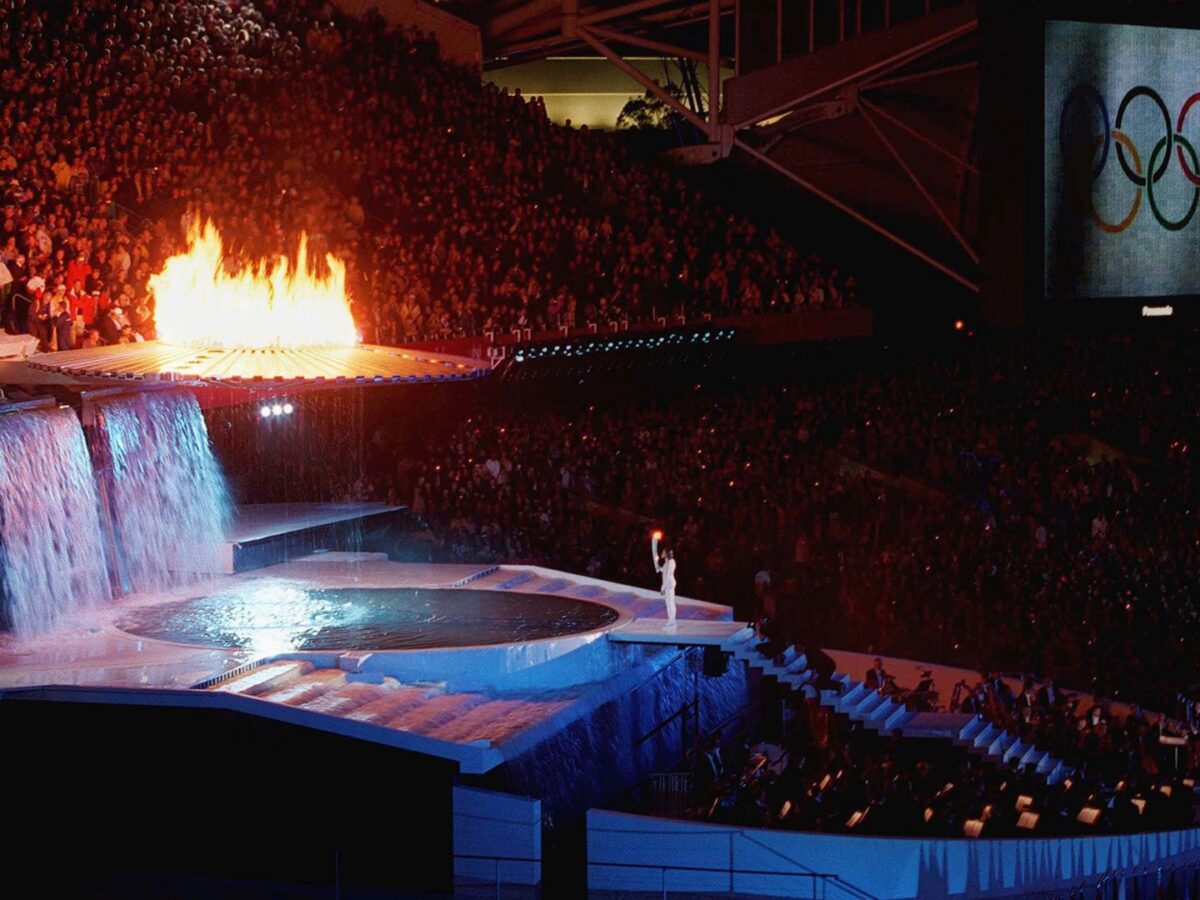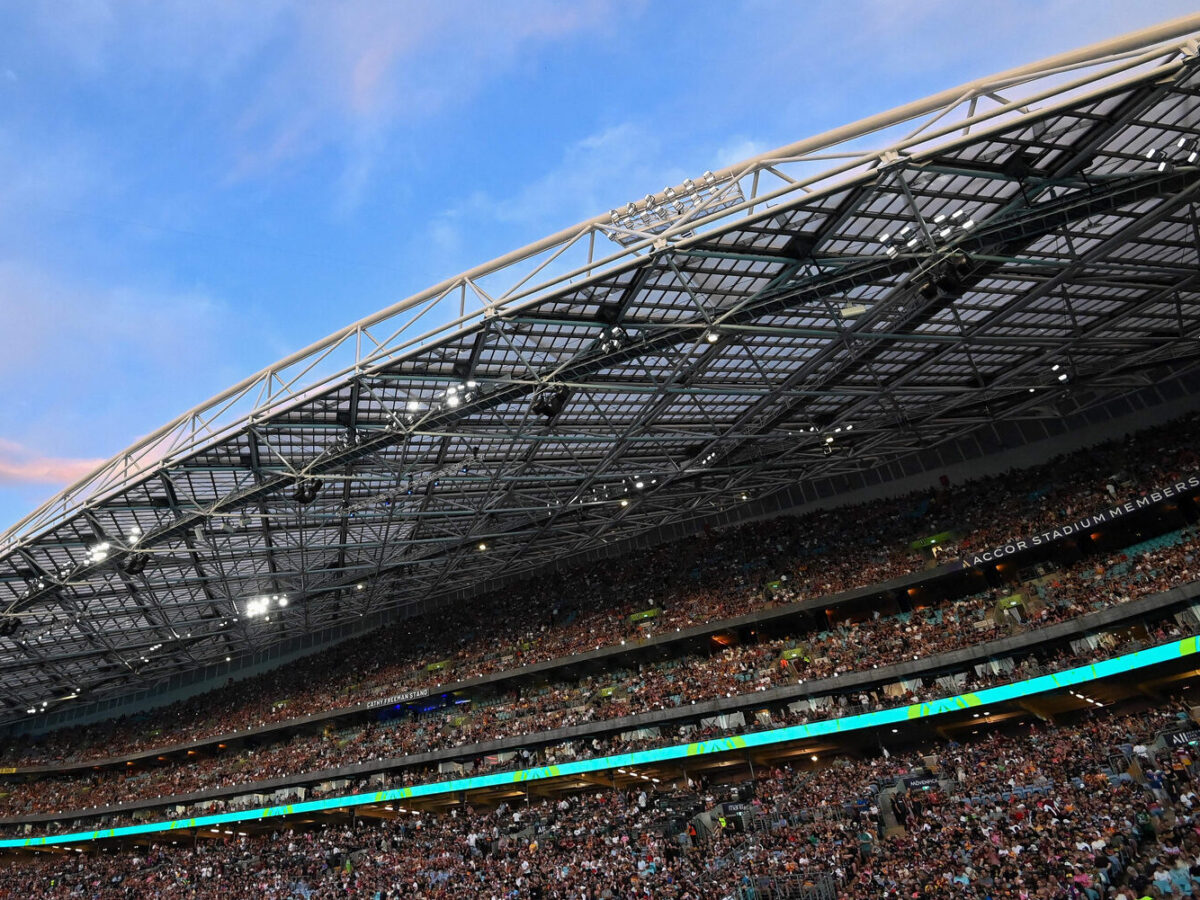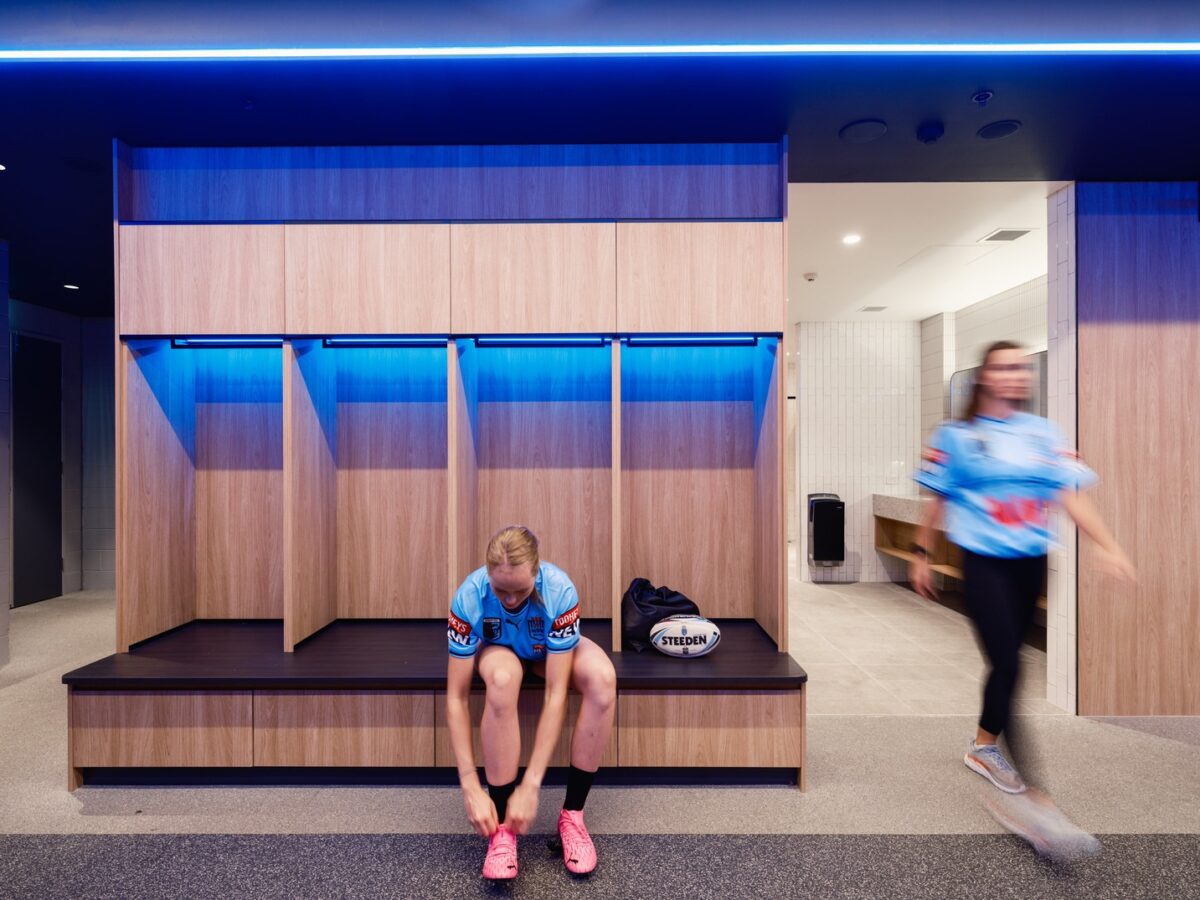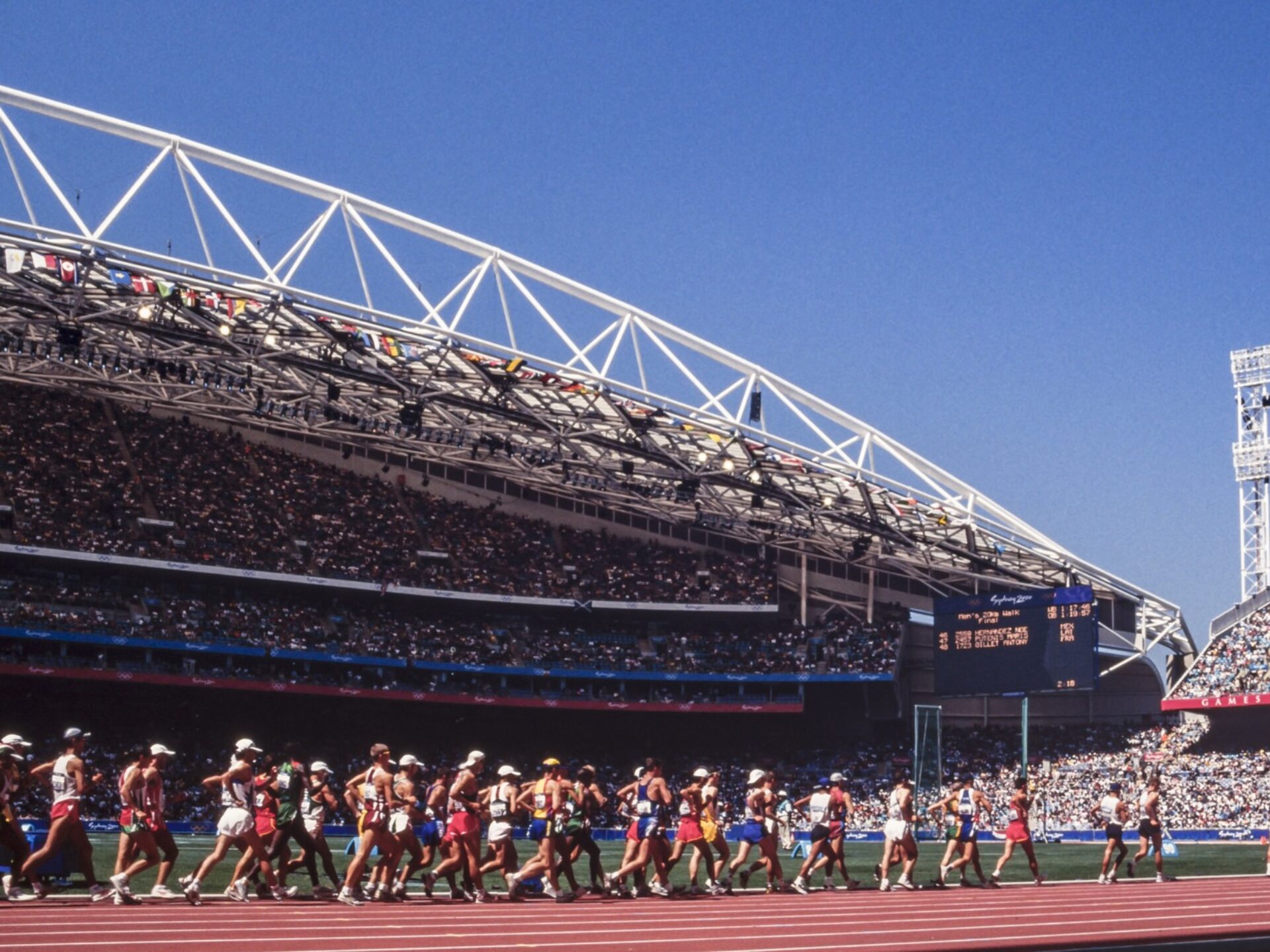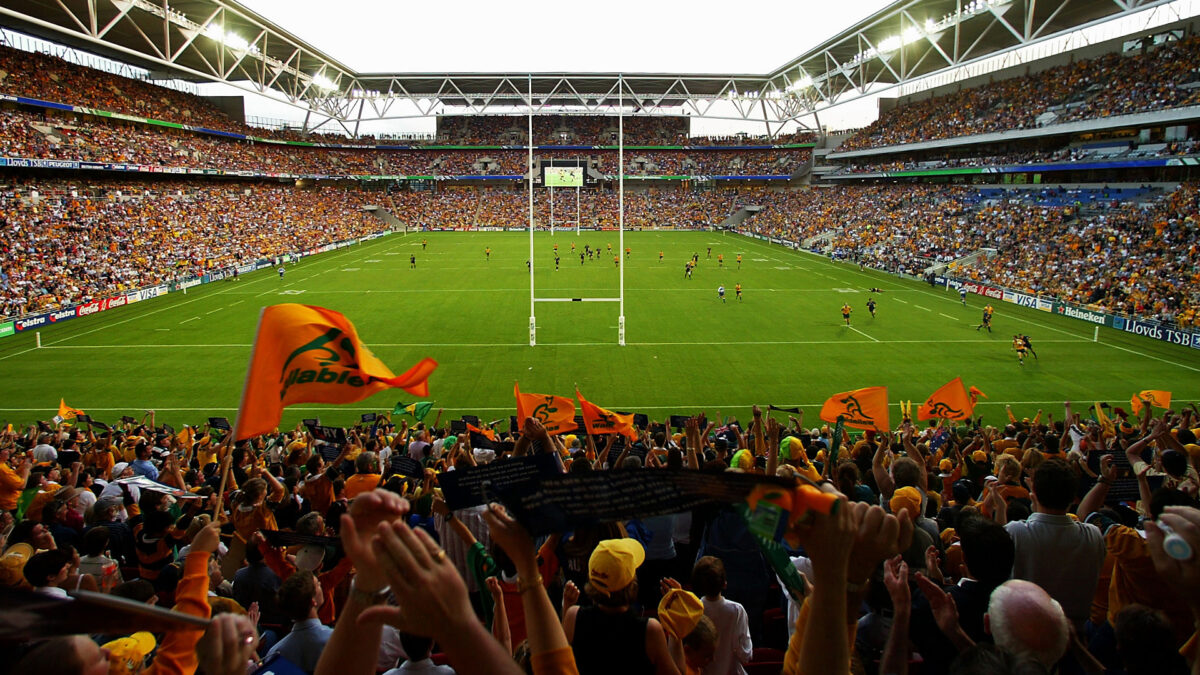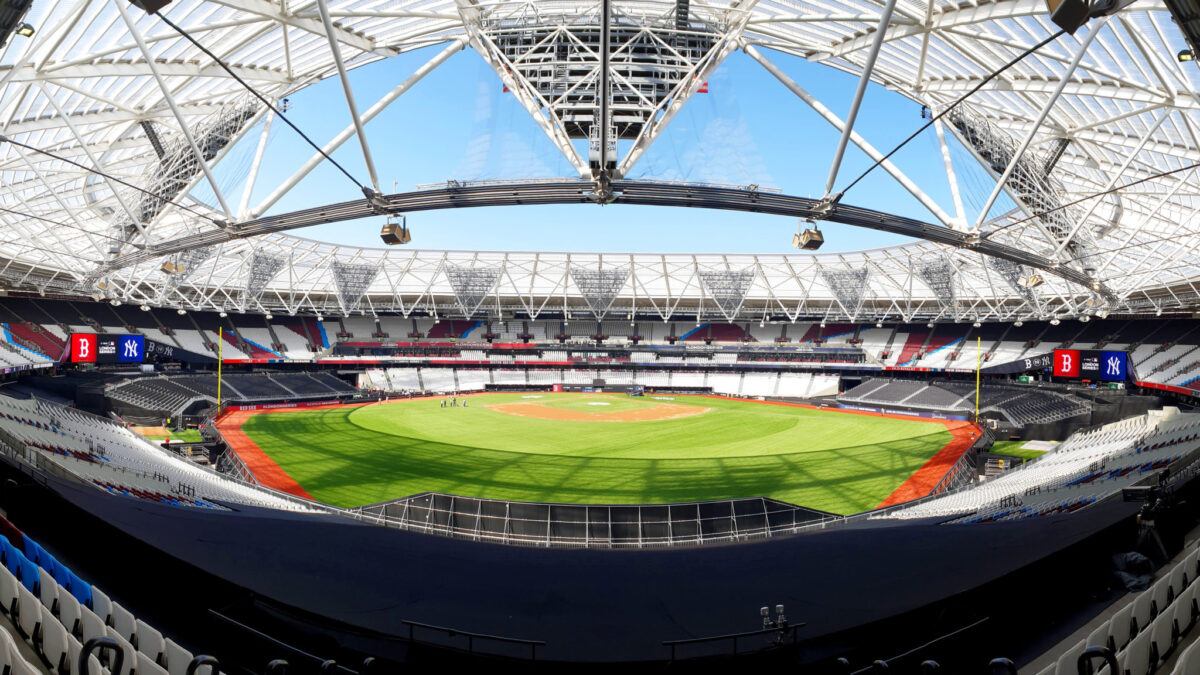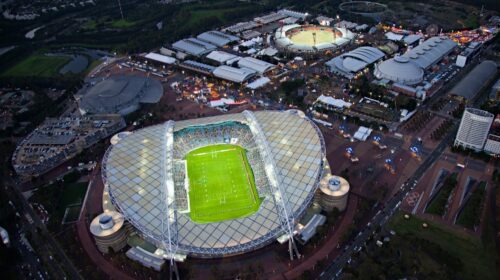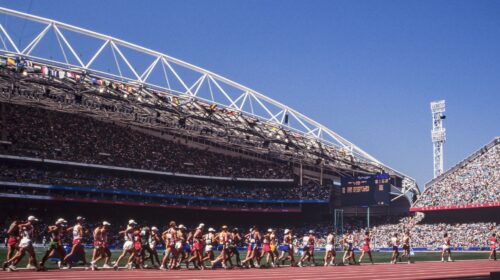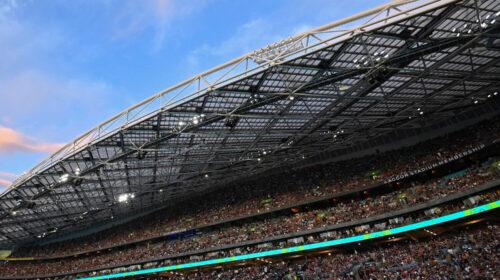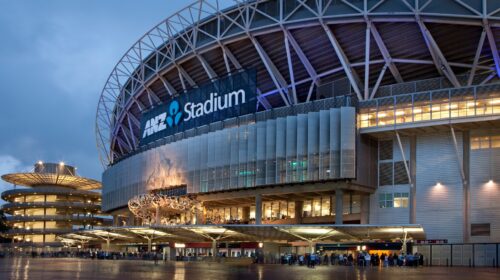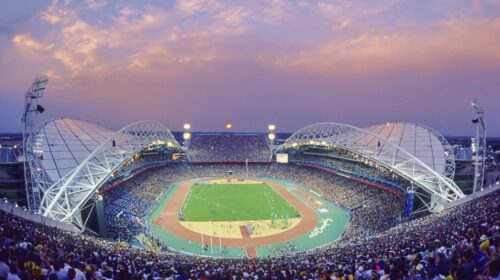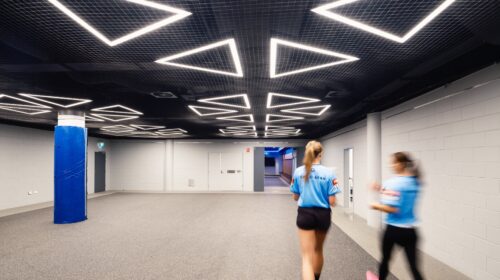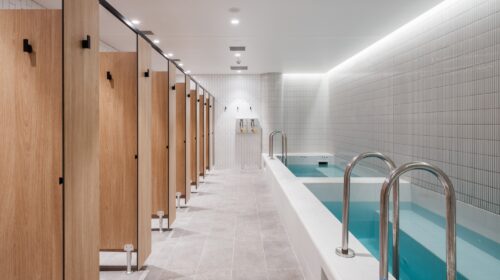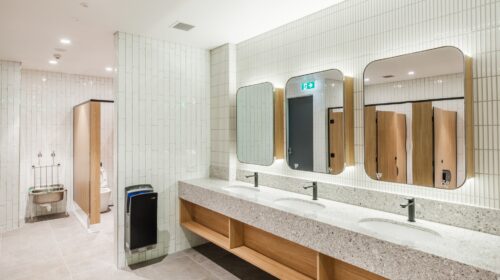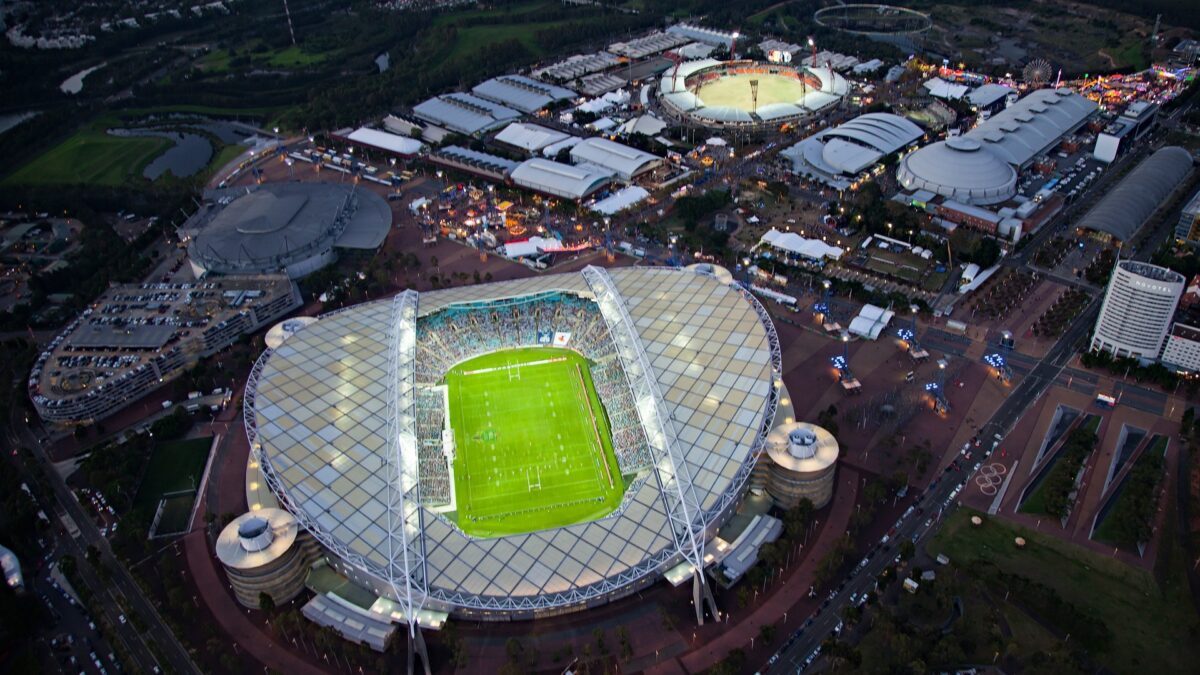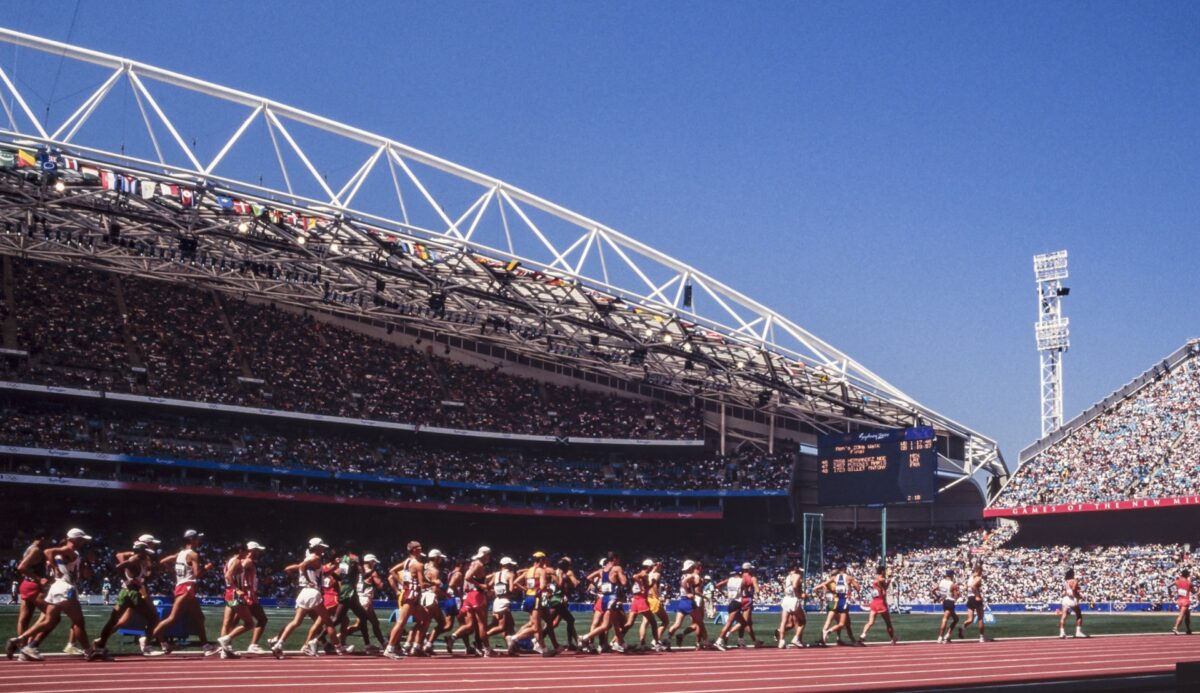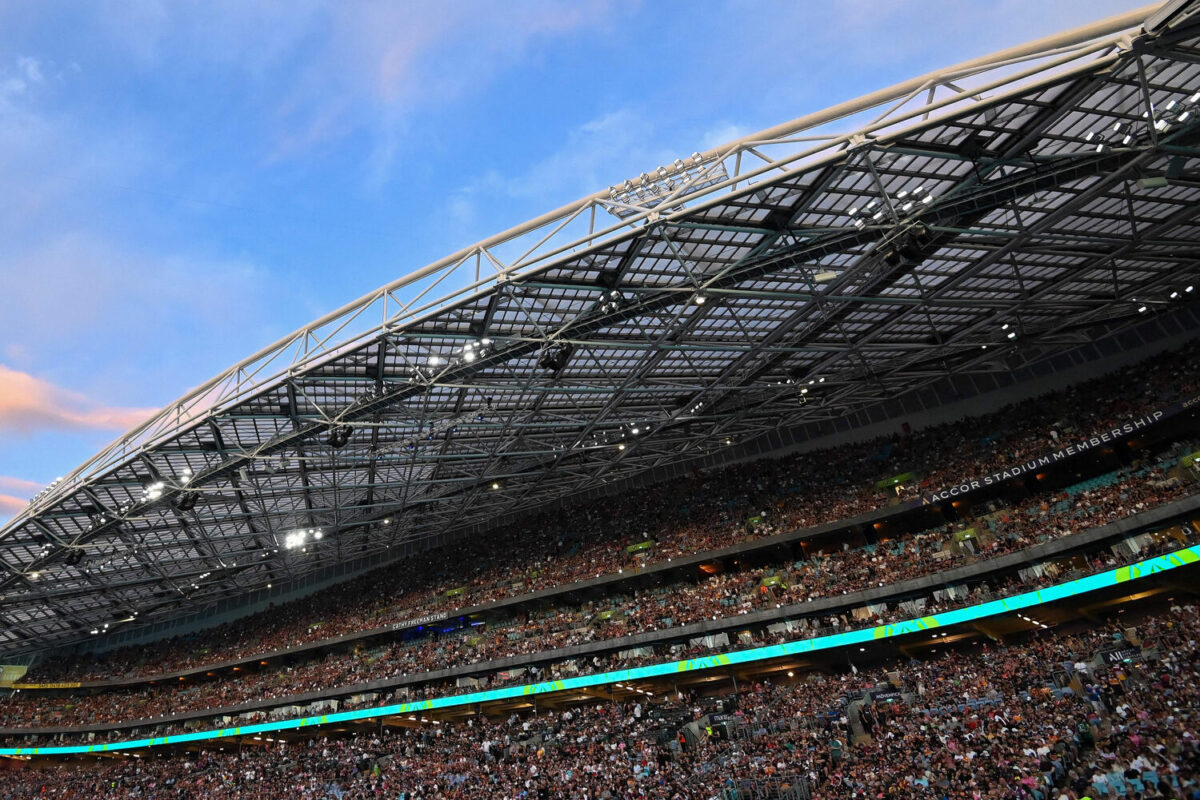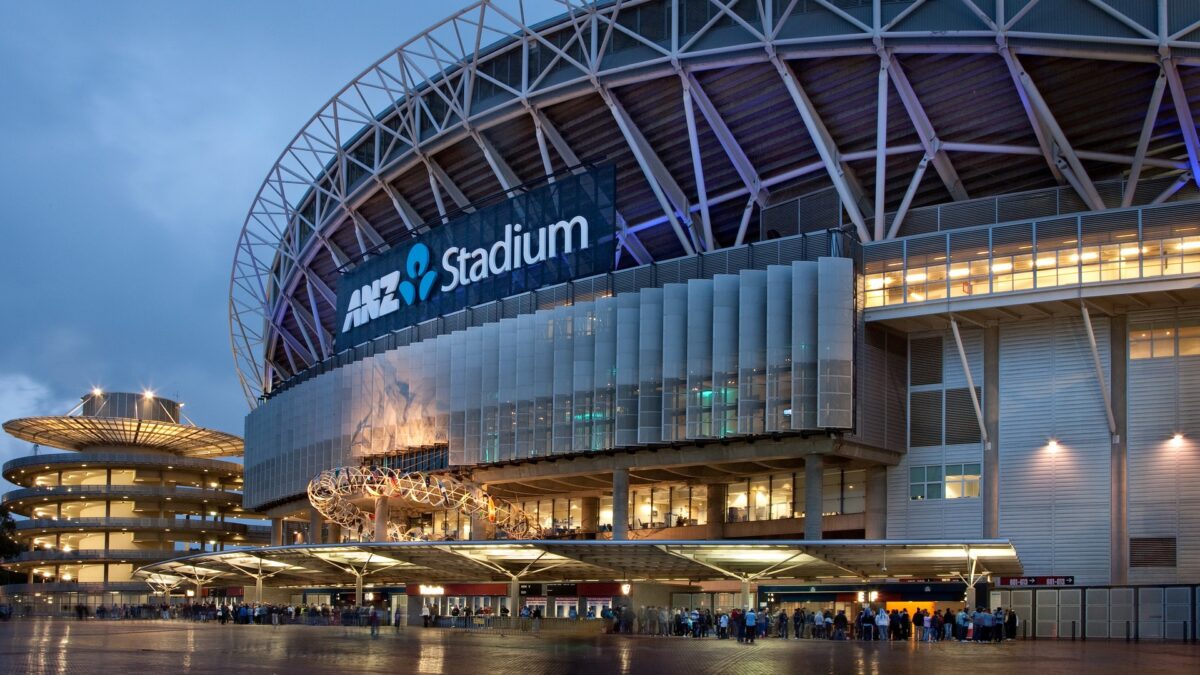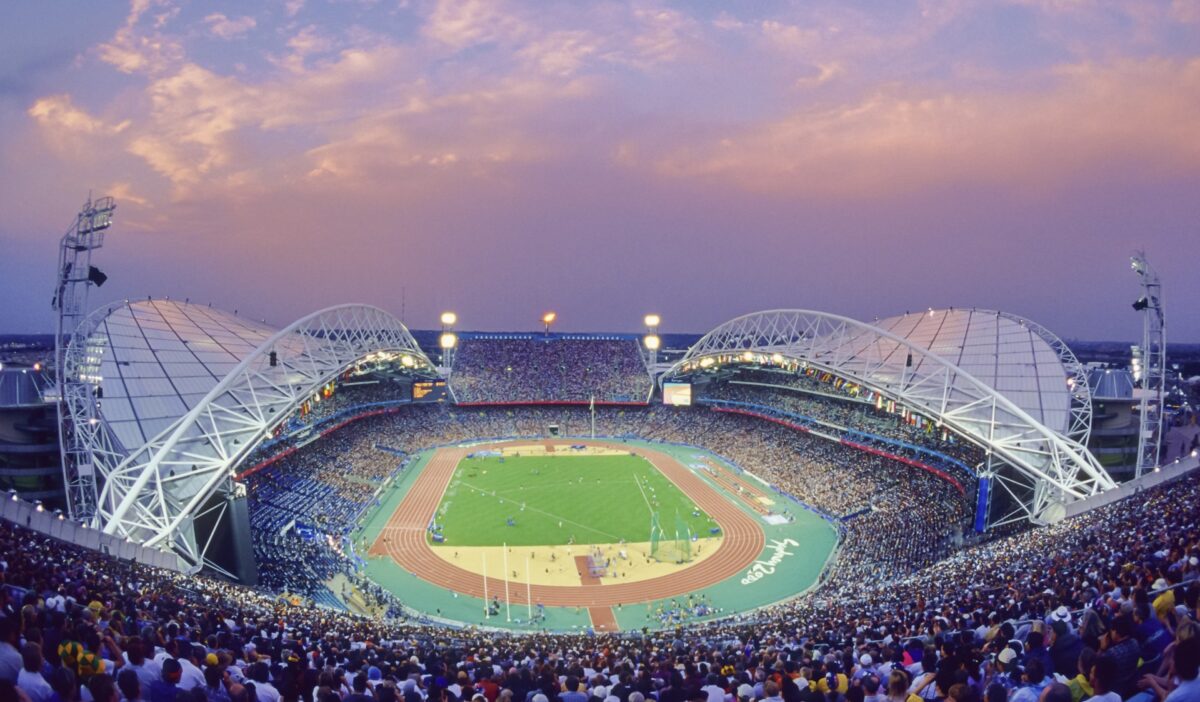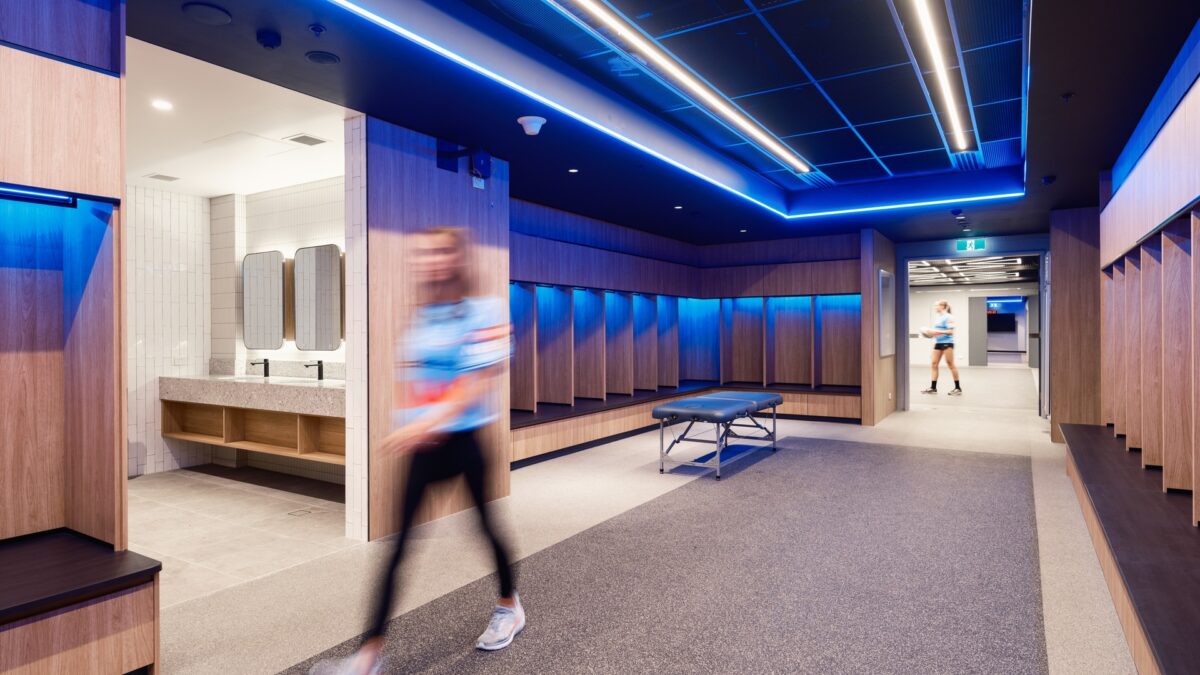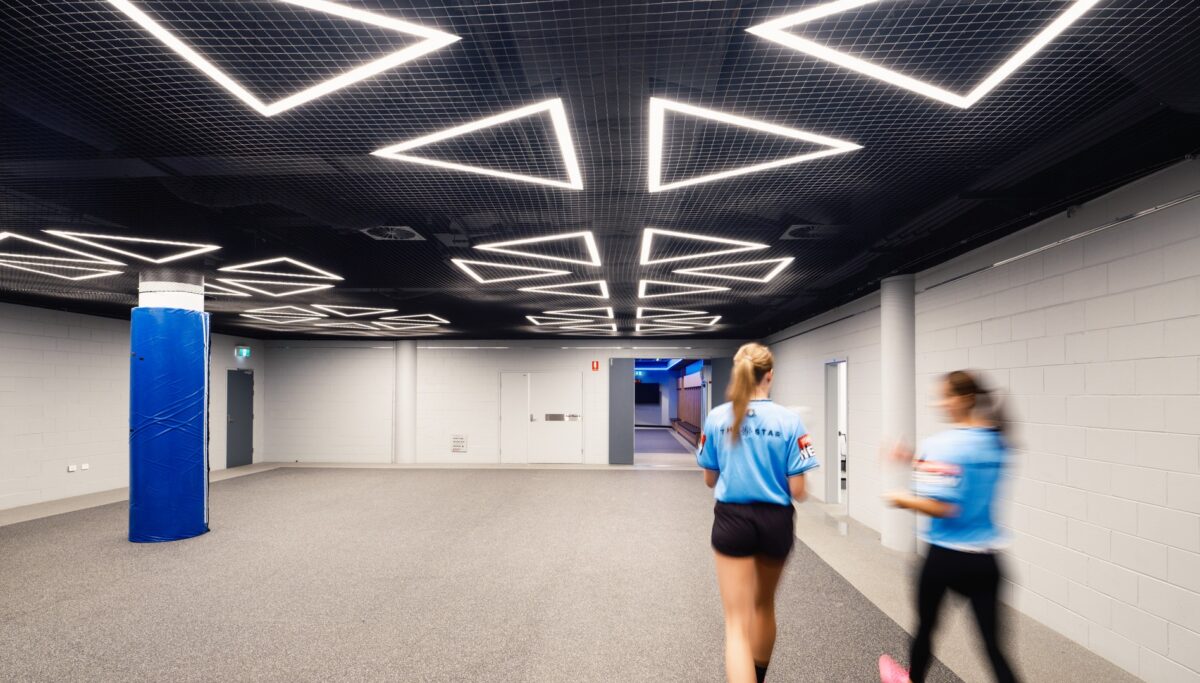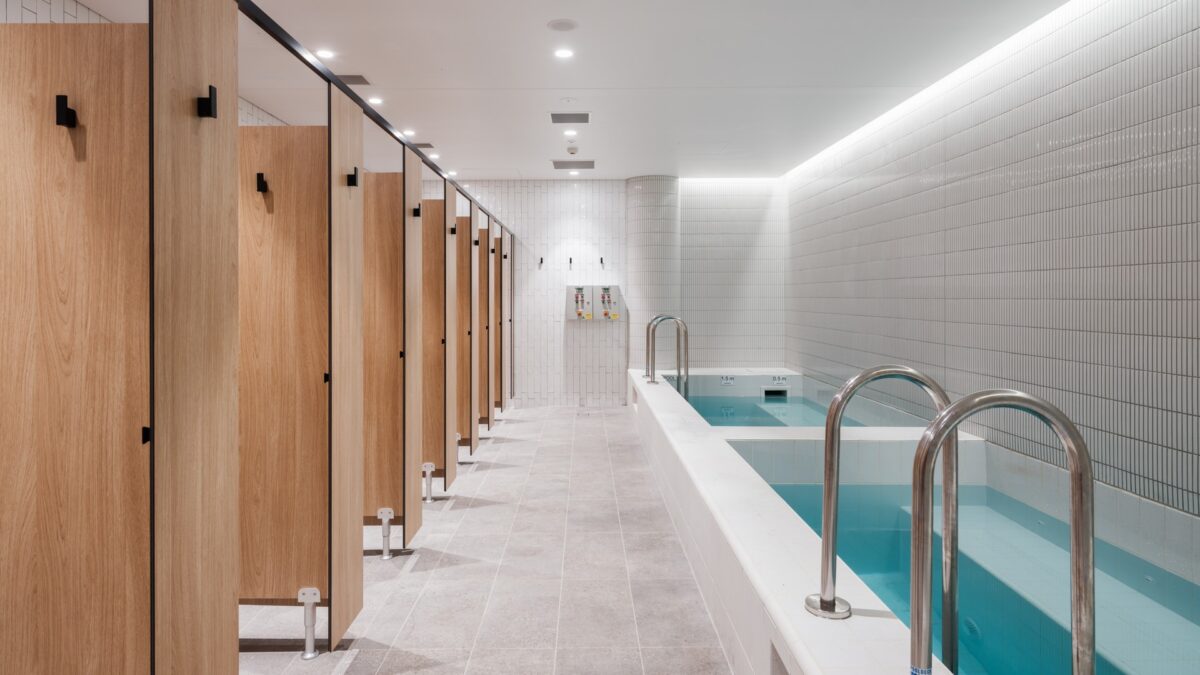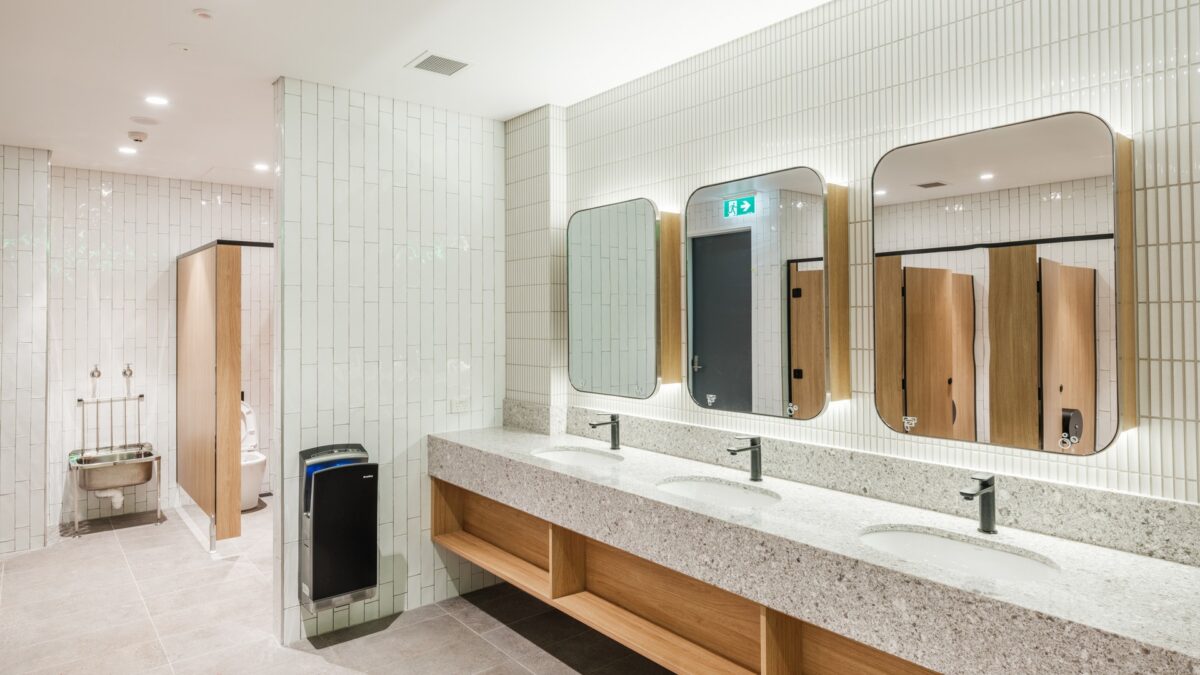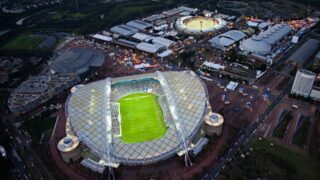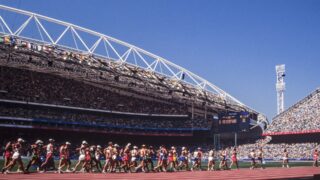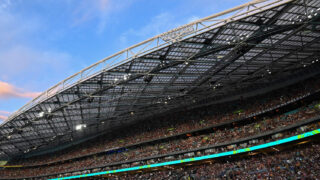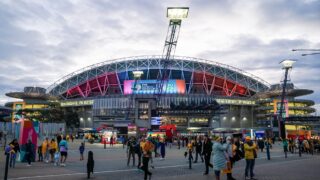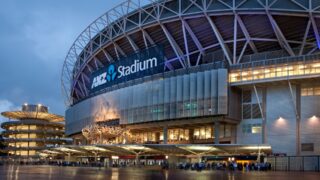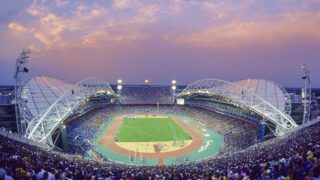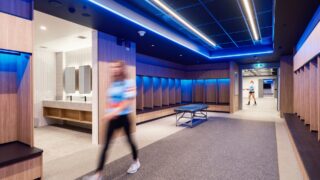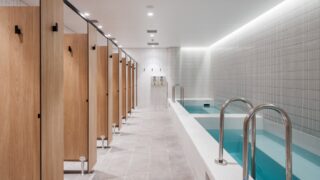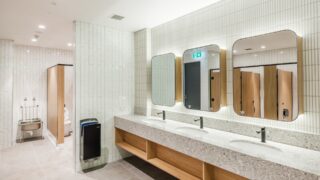Sydney, Australia
Stadium Australia Trust
The Times called the 2000 Sydney Olympic and Paralympic Summer Games “one of the most successful events on the world stage” while The Daily Telegraph said it was “such a success that any city considering bidding for future Olympics must be wondering how it can reach the standards set by Sydney.” The focal point for these exceptional Games was Stadium Australia, later known as Accor Stadium, the largest capacity Olympic stadium ever built.
Take one look at Stadium Australia, as it was known during the 2000 Sydney Olympic and Paralympic Summer Games, and you can see the DNA of an earlier Populous project running through it. The 295-metre-long curved trusses supporting the roof over the east and west stands echo those at the John Smith’s Stadium in Huddersfield. Except here, that roof forms a symbolic link with other Sydney landmarks, particularly the Harbour Bridge. And instead of protecting 24,500 rugby league fans from the damp English weather, it provided shelter from the Australian sun for some of the 118,000 spectators in attendance — the largest ever audience in an Olympic stadium. They would witness what is still considered to be one of the greatest Games in history.
The stadium is a model of green, functional, cost-effective design and is regarded as one of the most environmentally sustainable stadiums in the world to this day. The International Olympic Committee (IOC) wanted the Sydney Olympics to be the ‘Green Games.’ Innovative environmentally sustainable measures that were introduced into the main stadium included recycling rainwater from the roof into underground storage tanks to irrigate the pitch and a range of passive design measures including ventilation and natural cooling/heating.
Accor Stadium was future-proofed with the necessary infrastructure and cabling so it could respond to ongoing advances in technology. The roof design and material used not only provide maximum weather protection, but also an improved television picture for viewers at home.
The Park, where Accor Stadium is located, has provided a lasting legacy for Sydney and helped to regenerate an industrial area of the city, becoming an international centrepiece of a new community. Post-Games, the north and south stands were reduced for a total capacity of 85,000. Retractable seating was included too, supporting a variety of events, including the Rugby World Cup in 2003, World Masters Games in 2009, the 2015 AFC Asian Football Cup and the FIFA Women’s World Cup in 2023. It has also hosted some of the biggest names in entertainment, such as AC/DC, The Rolling Stones, U2, Bon Jovi, Taylor Swift, Guns N’ Roses and Adele.

